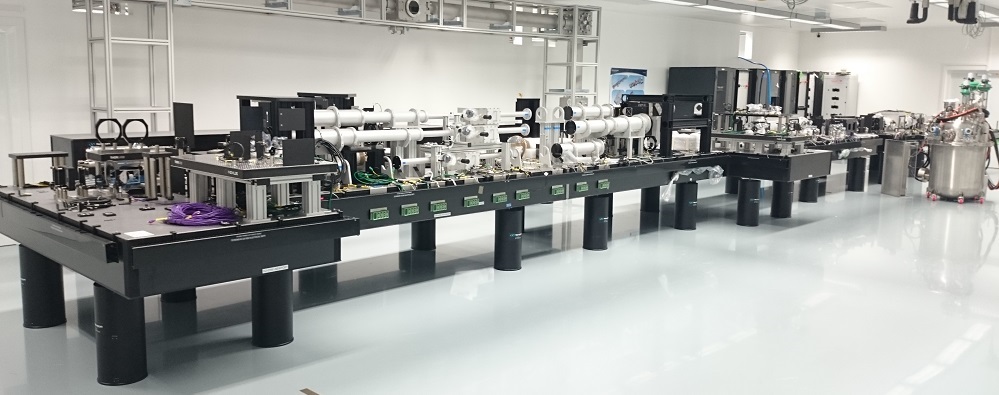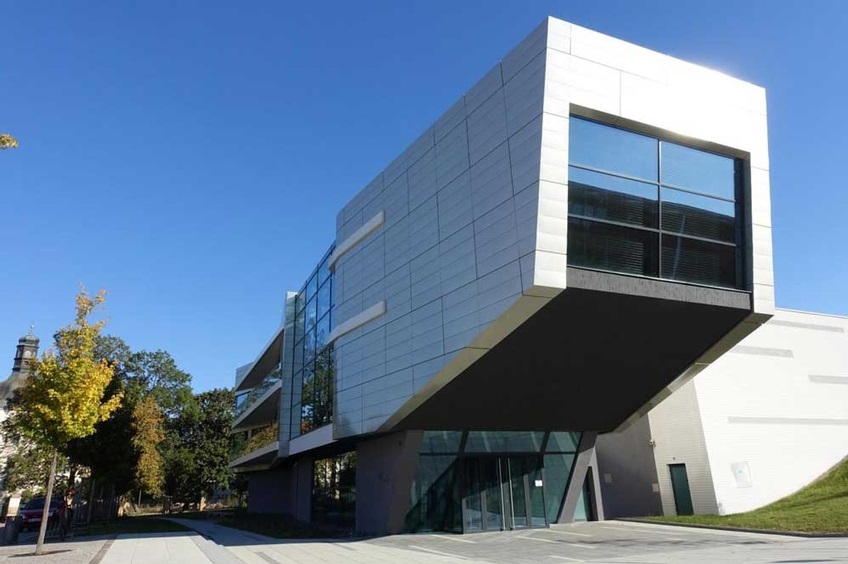15 February 2021
A laser developed by Science and Technology Facilities Council (STFC) scientists at the UK’s Central Laser Facility has set a new world record at the HiLASE Centre in Prague.
The new record for the output of a high power, high repetition rate laser was set in a recent test when the DiPOLE 100 system, delivered by the Central Laser Facility (CLF) team to the HiLASE Centre in 2016, was operated for an hour at 10 pulses per second with a pulse energy in excess of 145 J, an increase of nearly 50 percent more than the system’s original specification.
By delivering this powerful pulse using the tried and tested DiPOLE system, scientists have shown that the technology will help experiments achieve better data, detecting weak signals against background noise. This will be crucial for facilities like CLF’s new Extreme Photonics Applications Centre, intended to image materials and complex working structures at ultra-high contrast.
This development is a really important step along the road of industrialising DiPOLE technology as it represents both a performance increase and also offers a route for a reduction in the future scale and cost of the technology.
This record was set as part of the continuing collaboration between HiLASE and CLF scientists. The project is jointly funded by the H2020 “Widespread Teaming” programme and the Ministry of Science of the Czech Republic.
The DiPOLE 100 laser in Prague, named BIVOJ after a Czech folk hero, is now a major component of the HiLASE facility. It is used by an international community of scientists and engineers for industrial and academic research including studies of advanced materials, laser processing and optical component development and testing.

The DiPOLE laser during recommissioning at HiLASE
Image credit: STFC
DiPOLE is an advanced laser architecture that incorporates diode laser pumping and cryogenic cooling to deliver high energy pulses at 10 pulses per second (10 Hz) with high wall plug efficiency that approaches 20 percent. The system bridges the gap between single shot, “proof of principle” demonstrations and “real world applications” that require high repetition rate and high energy efficiency.
Professor John Collier, Director of the STFC’s Central Laser Facility said:
“I am delighted by the latest results from the HiLASE facility. This is achievement is extremely important in our joint development of DiPOLE high power high repetition rate laser technology. It is significant both for HiLASE itself and also for future deployments of DiPOLE. These include the laser that STFC has supplied to the European XFEL and our own Extreme Photonics Applications Centre, a new facility under construction at STFC’s Rutherford Appleton Laboratory, that will use DiPOLE technology as a pump source.“
The energy increase was made possible using new optical materials and coatings, developed as part of the “Widespread Teaming” programme, to enhance the performance of critical components used in the laser. The team of scientists worked with the optical industry in both the UK and the Czech Republic, including Crytur in Turnov and MPO in the UK to raise the laser-induced damage threshold of optical elements.
Dr. Tomáš Mocek, Head of the HiLASE Centre, welcomed the technological breakthrough:
"Achieving 145 J at 10 Hz is a major milestone, firmly establishing diode-pumped power lasers at the forefront, significantly beyond the more traditional flash-lamp pumped systems. We now have a substantial technological lead. It opens up the pathway to new applications for materials processing, surface treatment and fundamental research into the interaction of high-power laser radiation with matter."
Increased pulse energy is just one element of the Widespread Teaming partnership. It also aims to increase the pulse repetition rate by a factor of 10 along with other improvements. In the future, scientists hope these improvements will enable real world applications for super-high power lasers that have been impossible until now, such as penetrative imaging through dense or complex objects.
The Central Laser Facility:
The UK’s Central Laser Facility (CLF) is based at the STFC’s Rutherford Appleton Laboratory at Harwell. It is a world leading laser facility, providing scientists from the UK, Europe and beyond with an unparalleled range of state of the art technology. CLF is a partnership between its staff its community of users who perform a broad range of experiments in physics, chemistry, and biology and the life sciences.
The HiLASE Centre:
The HiLASE Centre is a scientific research centre of the Institute of Physics of the Czech Academy of Sciences. The research programme of the Institute addresses five branches of physics: particle physics, the physics of condensed matter, solid state physics, optics and plasma physics.














